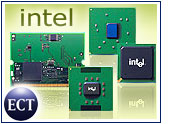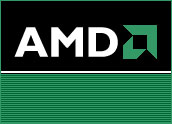
Intel cut the prices of many of its most popular semiconductors, a move that might be designed to help clear the way for the company’s next generation of chips.
The price cuts, which were announced on the company’s Web site, were being billed as part of the normal course of doing business and not as a reaction to rising inventories that many analysts took note of when Intel last reported earnings.
Others noted that Intel often makes price shifts in the middle of a quarter to boost sales of certain products and that it might be starting to make room for its upcoming Madison chip — an updated version of Itanium — due to debut this fall.
Price Cut Specs
The price cuts ran as high as 35 percent for the Pentium 4 560 chip, which had its price slashed from $637 to $417 in 1,000-unit batches. The price of the Pentium 4 550 was cut 33 percent to $278 from $417.
Also reduced were the Mobile Pentium 4 538 model, which had its price tag cut 20 percent to $234 and the server-friendly Itanium 2 1-GHz chip, which saw a 29 percent price cut, bringing the cost to $530 from $744.
Not included in the price reductions was the popular Centrino chip featuring built-in wireless functionality and the Pentium 4 Extreme Edition, the company’s fastest desktop chip, which will still sell for $999. Some chips in the Celeron family saw much smaller price cuts in the 7 to 11 percent range.
Intel shares were reacting favorably to the news, rising less than 1 percent in Tuesday trading to $22.04.
Timing Questioned
Intel insisted the move did not reflect concern that inventories were stacking up too high and analysts noted that forecasts are for PC sales growth. Demand for chips should therefore remain robust at least through the end of this year.
In fact, a report released Tuesday by Gartner predicted 27 percent revenue growth this year for chip makers, with the industry growing to $226 billion.
Gartner Vice President Richard Gordon said the rising inventories are still in the low end of the “caution” zone for the industry and are a normal occurrence during a rising market, when chipmakers boost production to meet rising demand. But he said that some companies are already moving to make inventory reductions as a hedge against a slowdown in sales heading into 2005.
“The hangover from the severe market downturn endured in 2001 still lingers, just as concerns about the next downturn have begun to worry semiconductor industry executives,” Gordon said.
“The companies are weary of being caught by surprise, given the mixed signals in the market and the economy as a whole,” Gordon told the E-Commerce Times
Not Worried
Most analysts agreed the price cuts were probably not a reaction to some shifts in market share reported earlier this month. They do come in time to help boost sales in the most important quarters of the year for chip makers — the second half of the year contains the back-to-school and holiday buying seasons.
Dean McCarron, an analyst with Mercury Research, told the E-Commerce Times that the half-percentage point boost in market share that Advanced Micro Devices, Intel’s largest competitor, logged in the second quarter is likely a seasonal shift that Intel is confident it can recapture over time without major alterations to its product or price lineup.
“There are seasonal moves as one product line or another does well,” McCarron said. “I don’t think Intel has seen anything in the marketplace that threatens its dominance in the long run.”












































Social Media
See all Social Media